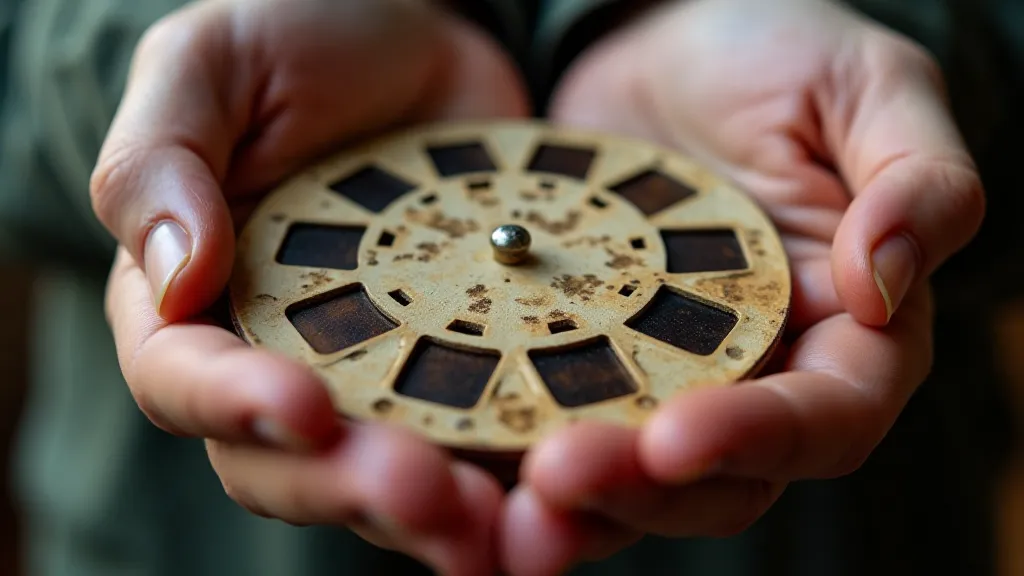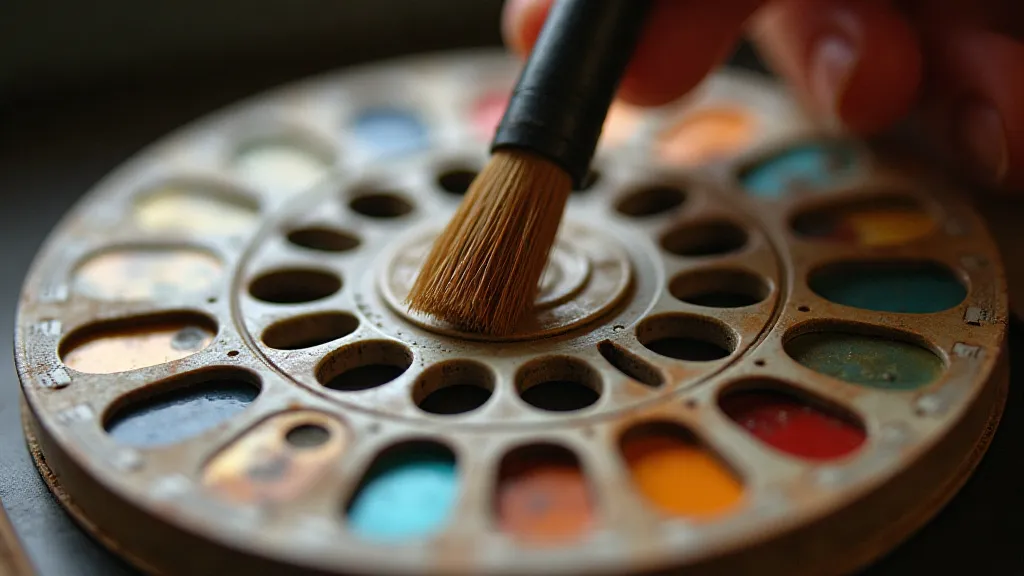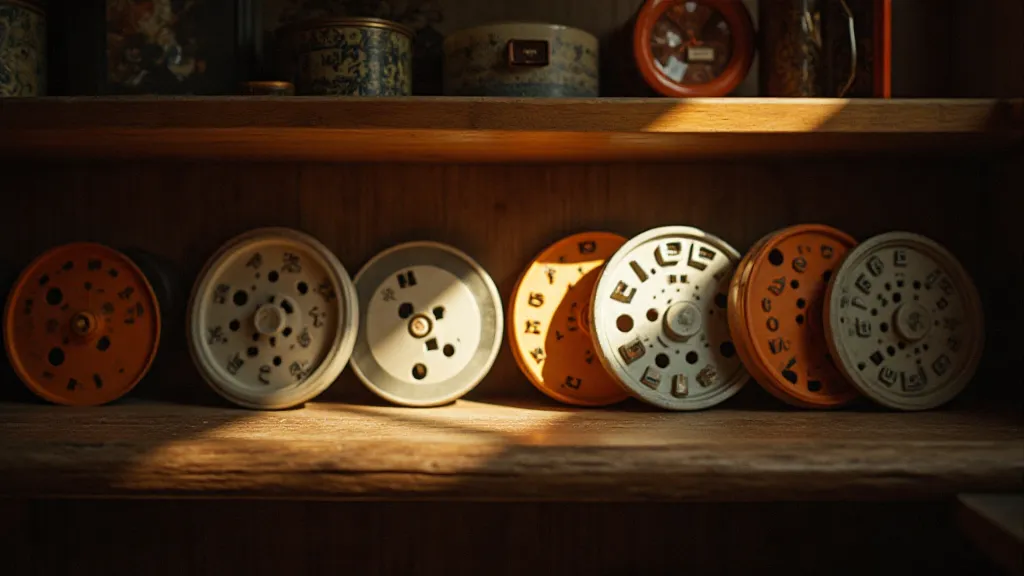Ephemeral Echoes: Mending the Ghosts in a View-Master Reel
There’s a quiet poetry to holding a View-Master reel. Not just the familiar click-clack of the mechanism, but the very feel of the cardboard, the subtle scent of aging paper, the silent promise held within its tiny, perfectly aligned images. These weren't mere entertainment; they were portals, miniature time capsules transporting us to bustling cityscapes, majestic landscapes, and moments frozen in history. But time, as it always does, leaves its mark. Dust, mold, scratches, and brittle edges – these are the visible manifestations of decades passed, slowly eroding the vibrant echoes trapped within.
My fascination with View-Masters began, predictably, in childhood. My grandfather, a quiet man with a twinkle in his eye, possessed a small collection. They weren’t fancy; mostly travel reels – Hawaii, Yellowstone, the Swiss Alps. But for a boy growing up in a quiet suburban town, they were adventures unbound. I remember the hushed reverence with which he’s handle them, the way he’s explained the history behind each image, the pride he took in their preservation. He understood instinctively that these weren’t just toys; they were tangible links to a past that was slipping away.

The Fragility of Memory, the Labor of Restoration
The concept of restoration isn’t just about fixing a broken object; it's a philosophical act. It’s a conscious decision to resist entropy, to defy the inevitable march of time. When we undertake the repair of a View-Master reel, we’re not merely replacing a cracked edge or carefully cleaning away dust. We’re intervening in the natural decay process, attempting to salvage a fragment of memory, a whisper of a bygone era. It’s a deeply personal and, I find, surprisingly moving experience.
Many collectors shy away from restoration, fearing they’re tampering with the authenticity of the item. And there’s a valid point – an unrestored reel, with all its imperfections, tells a story of its own. It bears witness to its journey through time, the hands that held it, the environments it’s endured. However, when a reel is in truly poor condition – severely damaged, riddled with mold, or so brittle it risks crumbling entirely – restoration isn’t about erasing its history; it's about ensuring that history can still be experienced.
Understanding the Damage: A Detective's Work
The first step in any restoration project is careful assessment. What kind of damage are we dealing with? Mold is a common enemy, often leaving a faint but persistent odor and leaving behind dark stains. These stains, while unsightly, can often be lightened with careful cleaning using specialized archival cleaning solutions – never harsh chemicals! Brittle edges are another frequent problem, a consequence of aging paper and fluctuating humidity. These require delicate reinforcement, often using Japanese tissue paper and a pH-neutral adhesive.
Then there are the scratches, the surface imperfections that mar the clarity of the images. While these are often unavoidable – a testament to the reel's age – they can sometimes be minimized with careful polishing using archival-safe techniques. The key is patience and a gentle touch. Rushing the process almost invariably leads to further damage. It’s akin to a surgeon’s delicate work – one misstep can undo hours of painstaking effort.

The Craftsmanship of Preservation
The tools of the trade are surprisingly simple: archival-safe cleaning solutions, soft brushes, Japanese tissue paper, pH-neutral adhesives, and a great deal of patience. There are no shortcuts; no magical formulas that instantly restore a damaged reel. It’s a process of meticulous observation, careful manipulation, and a deep respect for the object being preserved. Each repair is a small act of craftsmanship, a testament to the enduring value of human skill and dedication.
The adhesives used are particularly crucial. Standard glues contain acids that will further damage the cardboard over time. Japanese tissue paper is uniquely suited for repair, being thin, strong, and easily molded to the contours of the reel. The process of laminating tears, reinforcing edges, and stabilizing brittle areas is an exercise in precision – a quiet dance between the restorer and the fragile object in their hands.
More Than Just Repair: A Connection to the Past
Restoring a View-Master reel isn't just about fixing a broken object; it's about reconnecting with a piece of history. As I carefully clean away the dust and grime, I often find myself transported back to the era when these reels were first created – a time of optimism, exploration, and a burgeoning fascination with the world beyond our own borders.
It's a humbling experience, holding in my hands an object that has witnessed so much. It’s a reminder that we are all part of a larger story, a continuous chain of memories and experiences that stretches back through time. And in preserving these fragments of the past, we’re not just safeguarding objects; we’re safeguarding stories, connections, and a sense of continuity that transcends generations.

A Collector’s Perspective: Authenticity and Care
For dedicated collectors, the decision to restore a reel can be a complicated one. The debate between preserving the "patina" of age and ensuring long-term viability is ongoing. While unrestored reels often command higher prices in some circles, a severely damaged reel is effectively lost to future enjoyment. Careful, reversible restoration – using techniques that can be undone if necessary – offers a compelling middle ground, allowing collectors to enjoy their treasures while mitigating further deterioration.
Ultimately, the restoration of a View-Master reel is a testament to the enduring power of memory and the human desire to connect with the past. It's an act of reverence, a labor of love, and a quiet celebration of the beauty and fragility of time.





